Sequence Of Images Of Auroras Seen At The South Pole Of Saturn. Images Combine Visible And Ultraviolet
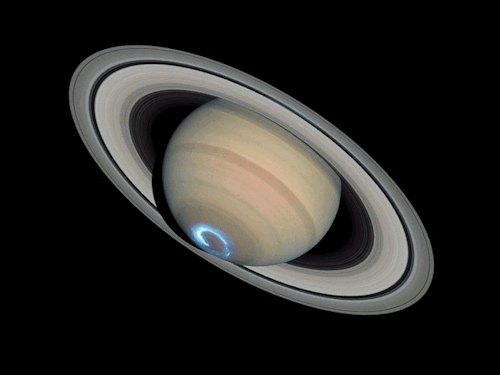
Sequence of images of auroras seen at the south pole of Saturn. Images combine visible and ultraviolet light.
Credit: NASA, ESA, J. Clarke (Boston University, USA), and Z. Levay (STScI)
More Posts from Xyhor-astronomy and Others
Drilling Through Ice in the Hunt of Celestial Life
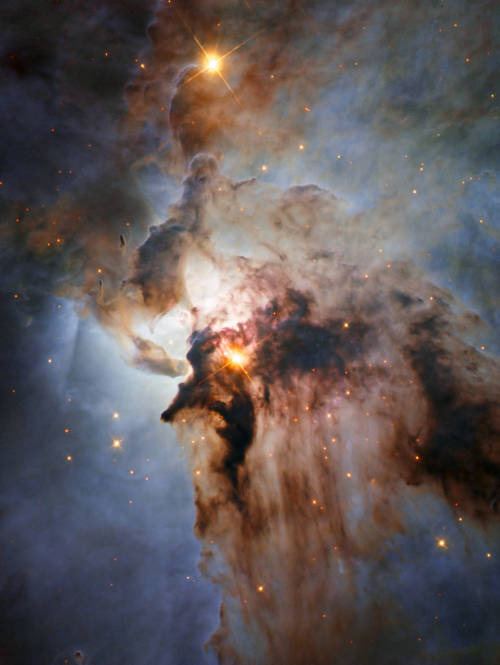
Stormy Seas in Sagittarius
This new NASA/ESA Hubble Space Telescope image shows the center of the Lagoon Nebula, an object with a deceptively tranquil name, in the constellation of Sagittarius. The region is filled with intense winds from hot stars, churning funnels of gas, and energetic star formation, all embedded within an intricate haze of gas and pitch-dark dust.
Image Credit: NASA/JPL/ESA/J. Trauger

The missing links between galaxies have finally been found. This is the first detection of the roughly half of the normal matter in our universe – protons, neutrons and electrons – unaccounted for by previous observations of stars, galaxies and other bright objects in space.

A false-color image of the mid-infrared emission from the Great Galaxy in Andromeda, as seen by Nasa’s WISE space telescope.
Credit: NASA/JPL-Caltech/WISE Team
Solar System: 10 Things to Know This Week...Halloween Edition!
This week, we’re getting into the Halloween spirit with 10 spooktacular things to let your imagination run wild.

It’s not Halloween without our favorite scary characters, but what if they could stop bothering us Earthlings and go far, far away? We begin with where Dracula, Frankenstein, and other creepy creatures might choose to live if the galaxy were theirs to claim…
1. The dark (k)night.

The prince of darkness himself, Dracula, can finally seek sweet respite from the Sun. We think he’d love to live on a rocky planet named YZ Ceti d that orbits so close to its red star that it’s tidally locked keeping one side of the planet in perpetual nighttime and the other side in perpetual daytime, with a brilliant red sky (though we can guess which side Dracula will prefer).
2. Where art thou, werewolves?

Home sweet home for our furry Full Moon friends might just be on Trappist-1, a planetary system with seven planets—and where standing on one planet would mean the other planets look like six moons (some as big as our Moon in the sky).
3. Left in the dust.

We couldn’t think of anyone better to live on Proxima b than The Mummy. Hopefully this ancient monster can finally rest in peace on an exoplanet that scientists theorize is a desert planet once home to ancient oceans.
4. Cloudy with a chance of Frankenstein.

One scientific experiment we’d like to conduct: whether Frankenstein would rather live on HAT-P-11b or Kepler-3b, theorized to have fierce thunderstorms and lightning.
5. The walking dead.

We’re pretty confident that if zombies were to pick a planet, they’d want one that shares their love of death and destruction. We think they’d feel right at home on one of the pulsar planets, which are scorched by radiation because they orbit a dead star.
6. Rest your weary bones.

Skeletons need look no further: Osiris, an exoplanet that’s so close to a star that it’s “losing its flesh” as the star destroys it, seems like a perfect match.
7. Enough of the scary stuff.

For kids out there, turn pumpkin decorating into an out-of-this-world activity with space-themed stencils, from Saturn to the Sun.
8. Spooky sounds.

Cassini’s radio emissions from Saturn could give creaky doors and howling winds a run for their money. Listen to the eerie audio recordings here and find more HERE.
9. Pumpkin-carve like a NASA engineer.

NASA engineers design and build robots that can fly millions of miles to study other planets for a living—so on Halloween, they can’t help but bring that creative thinking to the grand old tradition of pumpkin carving. Take a cue from their creations with these insider tips.
10. Detective for a day.

From blades of ice on Pluto to a fuzzy, white “bunny” photographed on Mars, become a solar system sleuth and see if you can solve the stellar mysteries in this slideshow (then compare with how scientists cracked the case).
Make sure to follow us on Tumblr for your regular dose of space: http://nasa.tumblr.com.
Solar System: 10 Things to Know This Week
Even the most ambitious plans start with a drawing. Visualizing a distant destination or an ambitious dream is the first step to getting there. For decades, artists working on NASA projects have produced beautiful images that stimulated the imaginations of the people working to make them a reality.

Some of them offered visualizations of spacecraft that had not yet been built; others imagined what it might look like to stand on planets that had not yet been explored. This week, we look at 10 pieces of conceptual art for our missions before they were launched–along with actual photos taken when those missions arrived at their destinations.
1. Apollo at the Moon

In 1968, an artist with our contractor North American Rockwell illustrated a phase of the Apollo lunar missions, showing the Command and Service Modules over the surface of the Moon. In 1971, an astronaut aboard the Lunar Module during Apollo 15 captured a similar scene in person with a camera.
2. Ready for Landing

This artist’s concept depicts an Apollo Lunar Module firing its descent engine above the lunar surface. At right, a photo from Apollo 12 in 1969 showing the Lunar Module Intrepid, taken by Command Module Pilot Richard Gordon.
3. Man and Machine on the Moon

Carlos Lopez, an artist with Hughes Aircraft Company, created a preview of a Surveyor spacecraft landing for our Jet Propulsion Laboratory in the early 1960s. The robotic Surveyor missions soft landed on the Moon, collecting data and images of the surface in order to ensure a safe arrival for Apollo astronauts a few years later. In the image at right, Apollo 12 astronaut Alan Bean examines the Surveyor 3 spacecraft during his second excursion on the Moon in November 1969.
4. O Pioneer!

In missions that lived up to their names, we sent the Pioneer 10 and 11 spacecraft to perform the first up-close exploration of the outer solar system. At left, an artist’s imagining of Pioneer passing Jupiter. At right, Pioneer 11’s real view of the king of planets taken in 1974.
5. The Grand Tour

An even more ambitious pair of robotic deep space adventurers followed the Pioneers. Voyager 1 and 2 both visited Jupiter and Saturn. Voyager 2 went on to Uranus and Neptune. Even the most visionary artists couldn’t imagine the exotic and beautiful vistas that the Voyager spacecraft witnessed. These images were taken between 1979 and 1989.
6. Journey to a Giant

Our Cassini spacecraft carried a passenger to the Saturn system: the European Space Agency’s Huygens probe. Huygens was designed to land on Saturn’s planet-sized moon Titan. At left is an artist’s view of Cassini sending the Huygens probe on its way toward Titan, and at right are some actual images of the giant moon from Cassini’s cameras.
7. Titan Unveiled

On Jan. 14, 2005, the Huygens probe descended through Titan’s thick haze and revealed what Titan’s surface looks like for the first time in history. Before the landing, an artist imagined the landscape (left). During the descent, Huygens’ imagers captured the actual view at four different altitudes (center)—look for the channels formed by rivers of liquid hyrdocarbons. Finally, the probe came to rest on a pebble-strewn plain (right).
8. Hazy Skies over Pluto

David Seal rendered this imaginary view from the surface of Pluto, and in the sky above, an early version of the spacecraft that came to be known as our New Horizons. At the time, Pluto was already suspected of having a thin atmosphere. That turned out be true, as seen in this dramatic backlit view of Pluto’s hazy, mountainous horizon captured by one of New Horizons’ cameras in 2015.
9. Dreams on Mars, Wheels on Mars

Long before it landed in Gale Crater, our Curiosity rover was the subject of several artistic imaginings during the years the mission was in development. Now that Curiosity is actually rolling through the Martian desert, it occasionally stops to take a self-portrait with the camera at the end of its robotic arm, which it uses like a selfie stick.
10. The World, Ceres

No one knew exactly what the dwarf planet Ceres, the largest body in the asteroid belt, looked like until our Dawn mission got there. Dawn saw a heavily cratered world—with a few surprises, such as the famous bright spots in Occator crater.

There’s more to come. Today we have carefully created artist impressions of several unexplored destinations in the solar system, including the asteroids Psyche and Bennu, and an object one billion miles past Pluto that’s now called 2014 MU69.

You can help nickname this object (or objects—there may be two) by submitting your names by Dec. 1. Our New Horizons spacecraft will fly past MU69 on New Year’s Day 2019.
Soon, we’ll once again see how nature compares to our imaginations. It’s almost always stranger and more beautiful than we thought.
Make sure to follow us on Tumblr for your regular dose of space: http://nasa.tumblr.com.
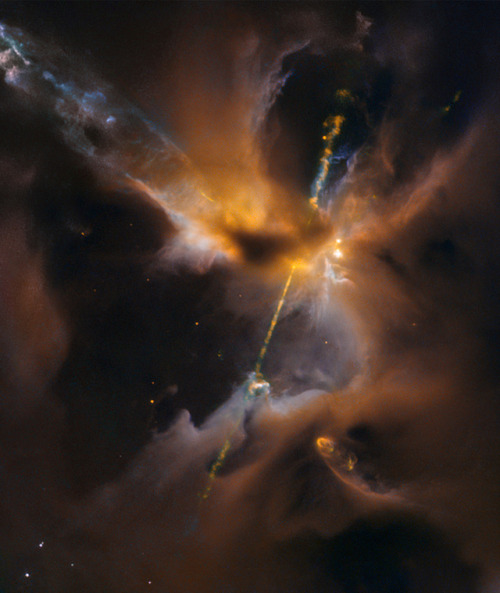
Hubble Sees the Force Awakening in a Newborn Star
This celestial lightsaber does not lie in a galaxy far, far away, but rather inside our home galaxy, the Milky Way. It’s inside a turbulent birthing ground for new stars known as the Orion B molecular cloud complex, located 1,350 light-years away.
In the center of the image, partially obscured by a dark, Jedi-like cloak of dust, a newborn star shoots twin jets out into space as a sort of birth announcement to the universe
Credit: NASA/ESA
Density puts things in their proper places.

Saturn photographed by the Cassini spacecraft in 2014
Image credit: NASA/JPL/Cassini; precessed by: Ian Regan

Black Holes are not so Black (Part 3) - Gravitational Waves
The existence of Gravitational Waves have been confirmed. But you probably have heard that. In this post, we will break down this profound discovery into comprehend-able chunks.
This is going to be a amazing journey. Ready ?
Redefining Gravity
When we usually talk of Gravitation we are bound to think like Newton, where objects are assumed to exerting a force upon each other.
Like imaginary arrows of force in space. But this picture, although good for high school crumbled, with the advent of Einstein’s theory of Relativity.

What is the Space-Time Fabric?
Think of space-time fabric as an actual cloth of fabric. ( An analogy )
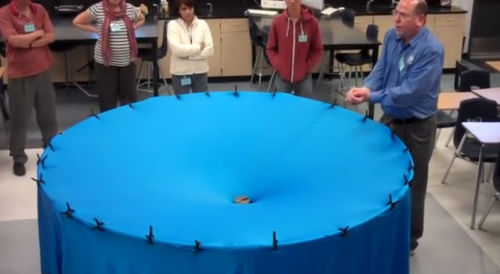
When you place an object on the fabric, the cloth curves. This is exactly what happens in the solar system as well.

The sun with such a huge mass bends the space-time fabric. And the earth and all the planets are kept in orbit by following this curvature that has been made by the sun.
Attributing to the various masses of objects, the way they bend this fabric also varies.
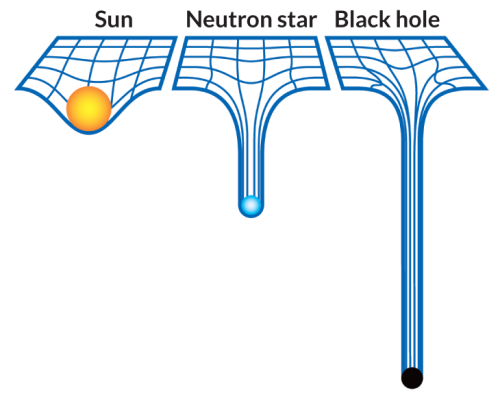
What are Gravitational Waves?
If you drop an object in a medium such as water, they produce ripples that propagate as waves through the medium.

Similarly, Gravitational waves are ripples in space-time fabric produced when you drag heavy objects through space time.
And the nature of these waves is that they don’t require a medium to propagate.
How do you make one?
Everything with mass/energy can create these waves.

Source
Two persons dancing around each other in space too can create gravitational waves. But the waves would be extremely faint.
You need something big and massive accelerating through space-time in order to even detect them.

And orbiting binary stars/black holes are valuable in this retrospect.
How can you detect them?
Let’s turn to the problem to detecting them assuming you do find binary stars/black-holes in the wondrous space to suite your needs.
Well, for starters you cannot use rocks/ rulers to measure them because as the space expands and contracts, so do the rocks. ( the distances will remain same in both the cases )

Here’s where the high school fact that the speed of Light is a constant no matter what plays an important and pivotal role.
If the space expands, the time taken for light to reach from A to B would be longer. And if it contracts, the time taken for it to reach from A to B would be smaller.

PC: PHDComics
By allowing the light waves from the contraction and expansion to interfere with each other, such as done in any interferometry experiment we can detect the expansion or contraction. Voila!
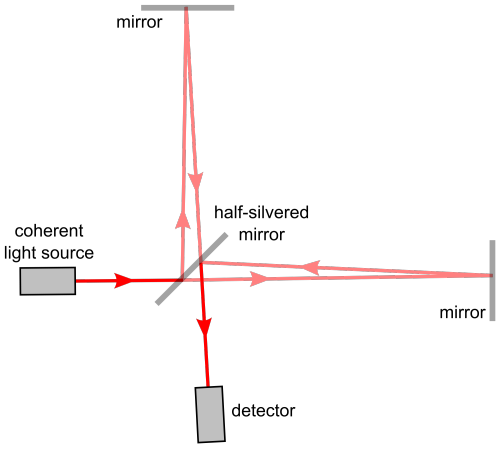
And this is exactly what they did! ( on a macroscopic level ) at LIGO (Laser Interferometer Gravitational-Wave Observatory)
14 September 2015

Two Black Holes with masses of 29 and 36 solar masses merged together some 1.3 Billion light years away.
Two Black Holes colliding is the header animation of the ‘Black Holes are not so Black Series’, in case if you haven’t noticed.

The merger of these two black holes results in the emission of energy equivalent to 3 solar masses as Gravitational Waves.
This signal was seen by both LIGO detectors, in Livingston and Hanford, with a time difference of 7 milliseconds.
And with the measurement of this time difference, physicists have pronounced the existence of Gravitational Waves.
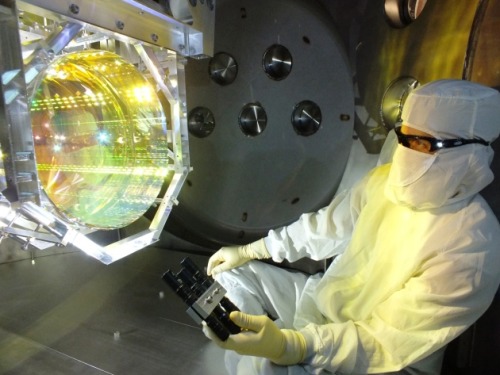
Source
All this is most certainly easily said than done and requires meticulous and extensive research, not to mention highly sensitive instruments.
Had they not have measured this time difference, we might have had to wait for the merger for more massive black holes to collide and maybe even build more sensitive instruments to detect these waves.
And Einstein predicted this a 100 years back!
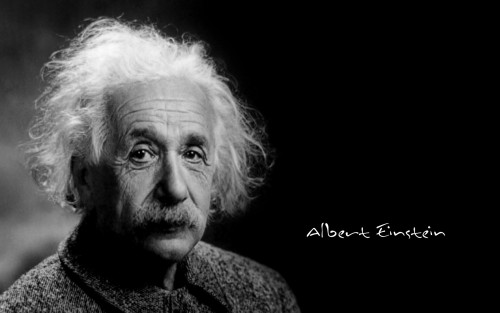
Mind Blown!
Note: Hope you are able to understand and appreciate the profundity of the discovery done by mankind.
** All animations used here are merely for Educational purposes. If you have any issues, please write to us at : 153armstrong@gmail.com
-
 texaschainsawmascara liked this · 8 months ago
texaschainsawmascara liked this · 8 months ago -
 baddestvenus-in-virgo reblogged this · 9 months ago
baddestvenus-in-virgo reblogged this · 9 months ago -
 baddestvenus-in-virgo liked this · 9 months ago
baddestvenus-in-virgo liked this · 9 months ago -
 callmepio liked this · 1 year ago
callmepio liked this · 1 year ago -
 soporis reblogged this · 1 year ago
soporis reblogged this · 1 year ago -
 dondeamar liked this · 1 year ago
dondeamar liked this · 1 year ago -
 cores-de-jade liked this · 1 year ago
cores-de-jade liked this · 1 year ago -
 corilol reblogged this · 1 year ago
corilol reblogged this · 1 year ago -
 corilol liked this · 1 year ago
corilol liked this · 1 year ago -
 darkwindows24 liked this · 1 year ago
darkwindows24 liked this · 1 year ago -
 chiclady liked this · 2 years ago
chiclady liked this · 2 years ago -
 thelilacserenade reblogged this · 2 years ago
thelilacserenade reblogged this · 2 years ago -
 pisceanpizza reblogged this · 2 years ago
pisceanpizza reblogged this · 2 years ago -
 dontbegrotty reblogged this · 2 years ago
dontbegrotty reblogged this · 2 years ago -
 hardcore6644 liked this · 2 years ago
hardcore6644 liked this · 2 years ago -
 y2k-hera reblogged this · 2 years ago
y2k-hera reblogged this · 2 years ago -
 boilerboysblog liked this · 3 years ago
boilerboysblog liked this · 3 years ago -
 anetteva liked this · 3 years ago
anetteva liked this · 3 years ago -
 livxchantelle liked this · 3 years ago
livxchantelle liked this · 3 years ago -
 555karolina liked this · 3 years ago
555karolina liked this · 3 years ago -
 kanzaki19 liked this · 3 years ago
kanzaki19 liked this · 3 years ago -
 legitimately liked this · 3 years ago
legitimately liked this · 3 years ago -
 anetteva reblogged this · 3 years ago
anetteva reblogged this · 3 years ago -
 radioactive-x-water liked this · 3 years ago
radioactive-x-water liked this · 3 years ago -
 takemyrevolutions liked this · 3 years ago
takemyrevolutions liked this · 3 years ago -
 13jaguar reblogged this · 4 years ago
13jaguar reblogged this · 4 years ago -
 13jaguar liked this · 4 years ago
13jaguar liked this · 4 years ago -
 alicexwonder reblogged this · 4 years ago
alicexwonder reblogged this · 4 years ago -
 pearlmoonlitskies reblogged this · 4 years ago
pearlmoonlitskies reblogged this · 4 years ago -
 spacepearll reblogged this · 4 years ago
spacepearll reblogged this · 4 years ago -
 hers-u liked this · 4 years ago
hers-u liked this · 4 years ago -
 falesteenya reblogged this · 4 years ago
falesteenya reblogged this · 4 years ago -
 falesteenya liked this · 4 years ago
falesteenya liked this · 4 years ago -
 spicy-salmon-julien reblogged this · 4 years ago
spicy-salmon-julien reblogged this · 4 years ago -
 spicy-salmon-julien liked this · 4 years ago
spicy-salmon-julien liked this · 4 years ago -
 thomasbrisenio liked this · 4 years ago
thomasbrisenio liked this · 4 years ago -
 juan61109 liked this · 4 years ago
juan61109 liked this · 4 years ago -
 n3v3r3v3rrr reblogged this · 4 years ago
n3v3r3v3rrr reblogged this · 4 years ago -
 annoyinglyvague liked this · 4 years ago
annoyinglyvague liked this · 4 years ago -
 attwiceez reblogged this · 4 years ago
attwiceez reblogged this · 4 years ago
For more content, Click Here and experience this XYHor in its entirety!Space...the Final Frontier. Let's boldly go where few have gone before with XYHor: Space: Astronomy & Spacefaring: the collection of the latest finds and science behind exploring our solar system, how we'll get there and what we need to be prepared for!
128 posts